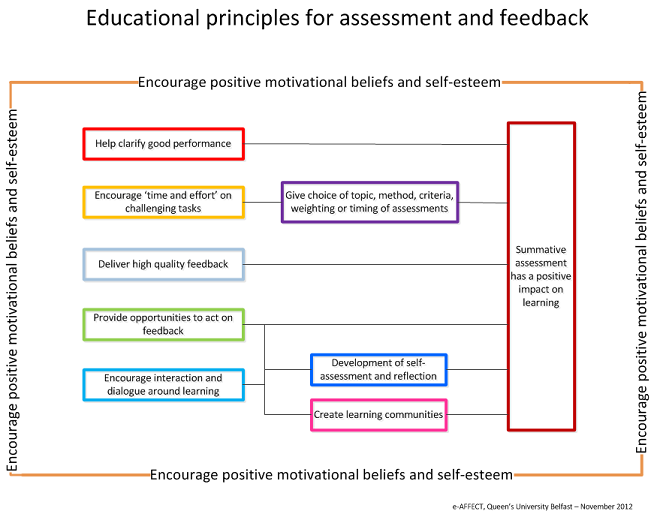The e-AFFECT project examined the principles of good practice used by REAP1 and decided to focus on those that were considered to be the most important in terms of the design of assessment and feedback activities and developed a conceptual model for the use of these in the project.

The rationale was that all assessment and feedback activities should encourage positive motivational beliefs and self-esteem. Within this, the application of the eight principles to the left and centre of the diagram:
- Help clarify good performance
- Encourage time and effort on challenging learning tasks
- Deliver high quality feedback
- Provide opportunities to act on feedback
- Encourage interaction and dialogue around learning
- Give choice of topic, method, criteria, weighting or timing of assessments
- Development of self-assessment and reflection
- Create Learning Communities
should promote a positive impact on learning from summative assessment.
To facilitate and engender dialogue with the programme teams around the educational principles, eight Educational principles cards were developed that set out the headline, the narrative behind it, suggested ways of accomplishing the principle and different technologies that might be used.
1 Nicol, D (2009) Transforming assessment and feedback: enhancing integration and empowerment in the first year, The Quality Assurance Agency for Higher Education, Mansfield